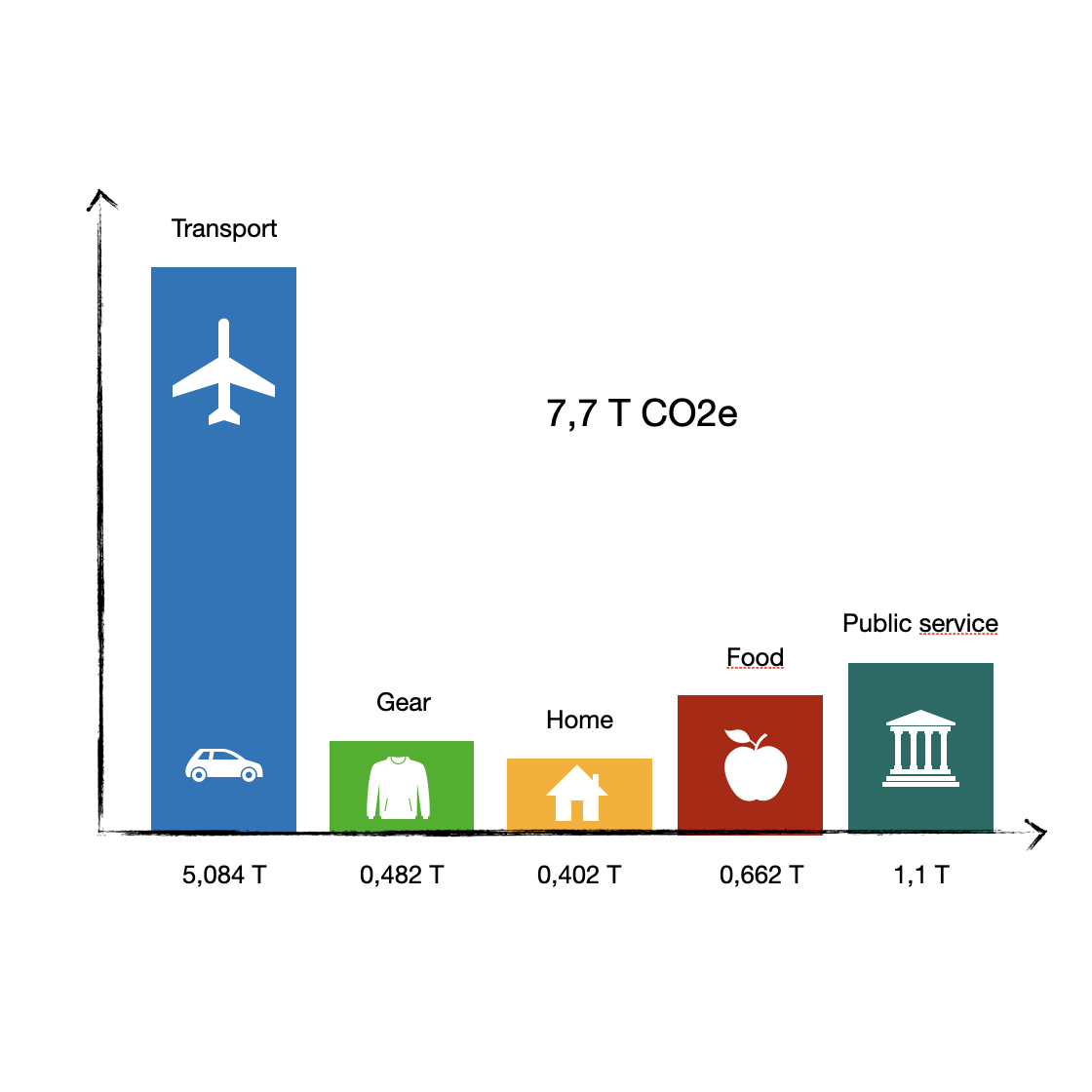Carbon footprint 2022
This year with the IPCC report we could only confirm what we already knew: it's important to take action to fight climate change from now. We all can do individual choices, from our diet to the movility, here some tips on what we can do as individuals. But also can have a impact in systemic change with voting for greener politics, with placing our money where they don't invest in fossil fuels, etc. First thing to do is to calculate my individual footprint to understand where I can make improvements to reduce it.
My carbon footprint for 2022 is about 7,7 Tons of CO2e. This is almost 4 times what it should be to be on line with the 1.5ºC agreement.

When it comes to home, even if all our energy comes from renewable sources and we try to be as efficient as possible it has an impact, but the biggest part here comes from internet use.
Mobility is my biggest footprint. ~ 1T comes from car transportation, this is reduced from last year but could be much less. Next year we plan to replace our car by an electric one, wich will contribute on that in the long term. I try to do all my trainings from home or on the way to kindergarten, to limit the daily transportation. The other big emissions here comes from air transportation, I did 1 long travel to Colorado US, and then 3 inside Europe. For an athlete, traveling is a big part of our work, but I should limitate those travels to races and projects that are really meaningful. Another common part of our lifestyle are some secondary races, that serve as training for the big goals or to support financially our career, For some years now I've declined all invitations to those races that are not my first goals and that requires extra travel, priorizing local races. Same goes for conferences, meetings, press events, etc. today I decided to do it online or not do it if it requires some commuting. That also goes for training camps that requires extra travel.
Gear: As someone being out all time I use a lot of gear. Most of them is not bought but given by my sponsors, and there we need to work better as athletes to not get more gear that the one we really use and to keep gear and clothes that are usable for long even if they're not the "last season colors". Here I believe with my new partners and projects I can have a positive impact, trying to reduce the number of items required for the practice of my activities with gear more durable and reparable and with itmes that can be used in more variety of activities.
Food and others: We're lucky to have an income that gives us the possibility to buy food with a low carbon footprint. All in the house we're having a vegetarian diet, and many of the vegies that we ate comme from the garden, but in Norway is still hard to find bulk products in supermarkets and the vegetarian / bio food choice is not as big as in other countries. Here it's also home items, IT, where we try to make them last the longest and only replace when they're unreparable and look always 2nd hand first.
Public service share: It's estimated that the share for each individual to the public services (school, health care, infrastructures, etc) is around 1.1 Tons of CO2e per year.